Hens and Chicks are popular, low-maintenance succulents loved by most gardeners. While growing Hens and Chicks, choosing the right location is the foremost priority.
So, in this article, we shall learn where do hens and chicks grow best.
In general, The best place for Hens and Chicks is a sunny spot with well-drained soil and open space to spread. Place them on the south or west-facing side where they can get enough sunlight. Hens and chicks thrive in hardiness zones 4 to 8, so you need to move them indoors for colder regions.
Read this article to understand the best spot in your garden for planting Hens and Chicks. Here, we will share with you some primary elements so that you can select the right spot for your Hens and Chicks with comfort.
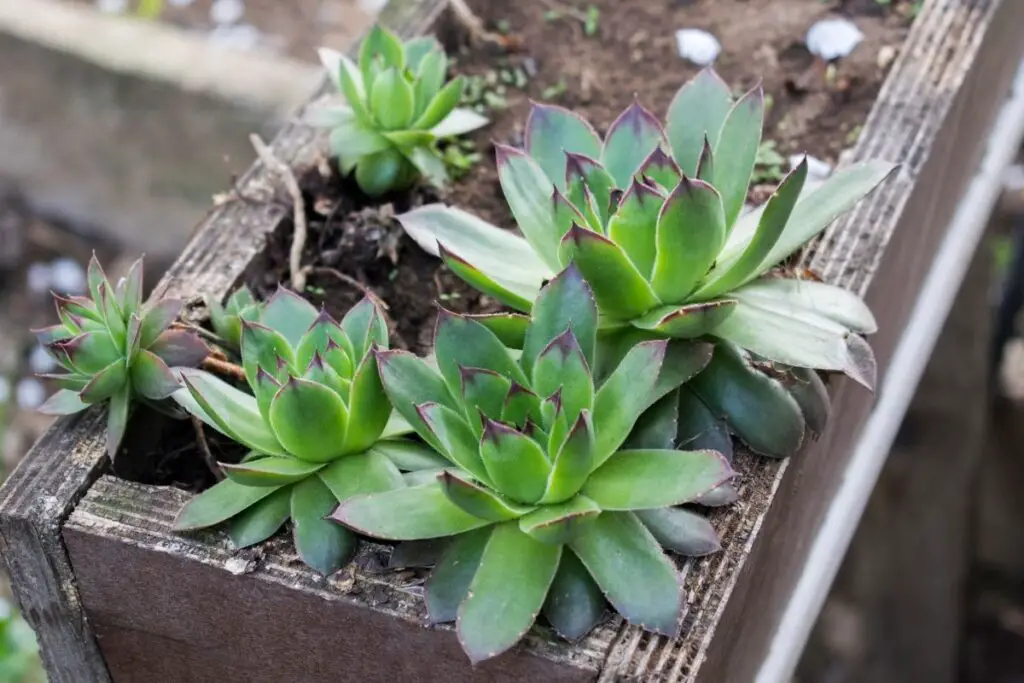
Where do Hens and Chicks grow best?
When it is about the best spot, two things strike the mind: a sunny spot, and another is a location with well-drained soil.
A site containing rocky soil or gravel bed is also the best spot, and a sunny spot is also the best spot. Let’s learn about them in detail and the reason behind it.
Do Hens and Chicks need sun or shade?
Hens and Chicks are sun-loving plants. They will grow best when they receive daily 8-10 hours of sunlight approximately.
However, this depends on the varieties you own. The larger species need full sunlight whereas, the dwarf varieties need partial sunlight. Read further to know which spot will give Hens and Chicks good sunlight.
Also read: How Much Sun Do Hen And Chicks Need? (Light Requirement)
A south or west-facing direction
A south or west-facing direction gives the best full sun. But in hot weather, the sunlight will be harsh. The Hens and Chicks enjoy the full sun for 8-10 hours. However, it depends on the species you are growing.
The larger varieties of Hens and Chicks will need full sun for about 8-10 hours. You can plant those in a sunny spot without any protection from the afternoon sun. A south or west-facing direction will be great for them.
The smaller varieties of Hens and Chicks will need partial sunlight for 4-8 hours. They will survive under the full sun but need protection from the harsh afternoon sunlight.
Receiving sunlight for 4-8 hours in different stretches will also be great for these varieties.
Looking for gardening supplies? We have tested 100's of products before recommending them to you guys. Check out our best pick below:
| Image | Gardening Supplies | Best Price? |
|---|---|---|
 Top
Top Top
Top | Raised Garden Bed Kit | Check On Amazon |
 | XLUX Soil Moisture Meter, Plant Water Monitor, Soil Hygrometer Sensor for Gardening, Farming, Indoor and Outdoor Plants, No Batteries Required | No Results |
 Top
Top Top
Top | 82 Pcs Garden Tools Set and Extra Succulent Tools Set | Check On Amazon |
 | Joeys Garden Expandable Garden Hose with 8 Function Hose Nozzle, Lightweight Anti-Kink Flexible Garden Hoses, Extra Strength Fabric with Double Latex Core, (50 FT, Black) | No Results |
 Top
Top Top
Top | Dual Chamber Compost Tumbler | Check On Amazon |
 Top
Top Top
Top | Sunnyglade Plant Stakes | Check On Amazon |
 Top
Top Top
Top | Organic Cold Pressed Neem Seed Oil | Check On Amazon |
 Top
Top Top
Top | Mighty Mint Gallon :-Insect and Pest Control Peppermint Oil | Check On Amazon |
 Top
Top Top
Top | Scotts DiseaseEx Lawn Fungicide | Check On Amazon |
 Top
Top Top
Top | Jacks Classic 20-20-20 All Purpose Fertilizer | Check On Amazon |
 Top
Top Top
Top | 30,000 Seeds Pollinator Attracting Wildflower Mixture | Check On Amazon |
 Top
Top Top
Top | Survival Vegetable Seeds Garden Kit-Over 16,000 Seeds | Check On Amazon |
North and east-facing direction
A north direction gives the least amount of sunlight if you live in the northern hemisphere. The plant will face problems in the winter.
Moreover, the level and intensity of the sun are low in winter. The larger varieties will face issues because they need full direct sun.
You can plant in an east-facing direction. It gives an ideal amount of sunlight. After south and west-facing directions, east is the next best zone for Hens and Chicks.
In winters, the plant remains dormant. So it won’t need intense sunlight. For the ongoing photosynthesis, 4 hours of sun will be enough to keep them healthy throughout the winter.
Just make sure they are getting sunlight, be it high or low. You should not plant these succulents in a spot where there are chances of full shade. The north direction will get the maximum amount of shade most of the time. It is better to ignore this direction.
If the smaller varieties get full sun, you can create shade for them.
A spot with well-drained soil
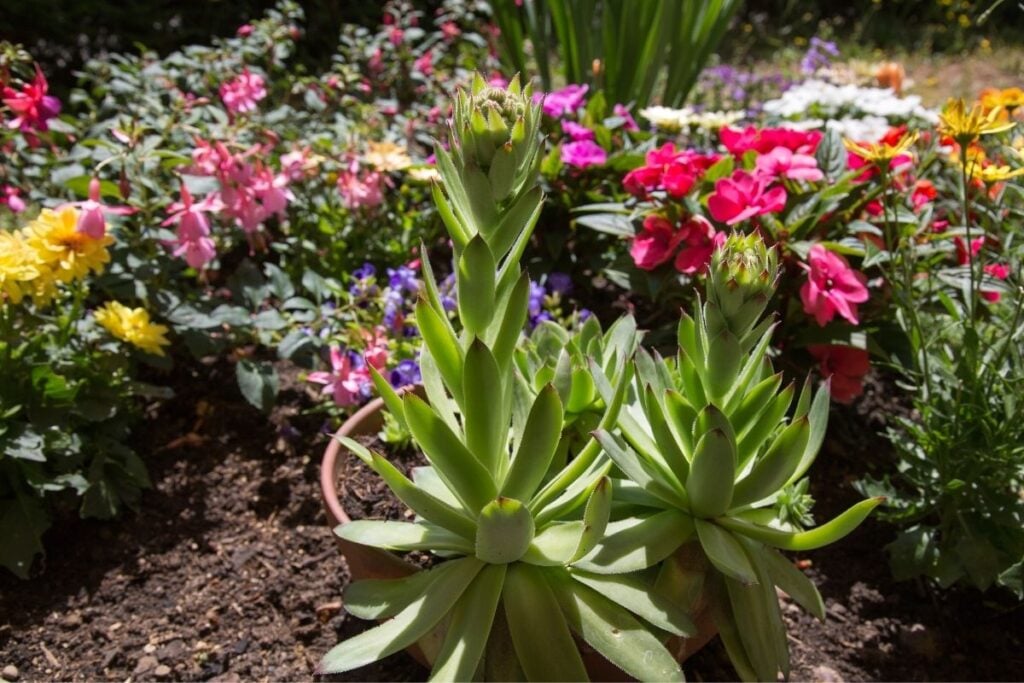
A site where the soil has proper drainage is best for keeping Hens and Chicks healthy. They are drought-tolerant plants that will not stay well if the soil bed is not draining excess water.
Avoid areas with pure clay or sandy soil. If you chose such spot for sunlight, amend it by adding ingredients like compost to improve drainage.
Another best area for Hens and Chicks is a location with rocky soil. Rocky soil is infertile soil that can drain water very well. Hens and Chicks will be thriving in such a place.
Also read: What Kind Of Soil Do You Use For Hens And Chicks? (+Best Soil Mix)
An open space
A place with lots of space will encourage more production of baby plants and good air circulation for Hens and Chicks. Hens and Chicks will grow best in such surroundings.
Where will be the best place for Hens and Chicks in my garden?
For selecting the best spot in your garden, you should, of course, consider the factors I mentioned in the previous point.
Along with these points, there are also other aspects you must assume for selecting the best location for Hens and Chicks.
Choose a spot that receives ample sunlight.
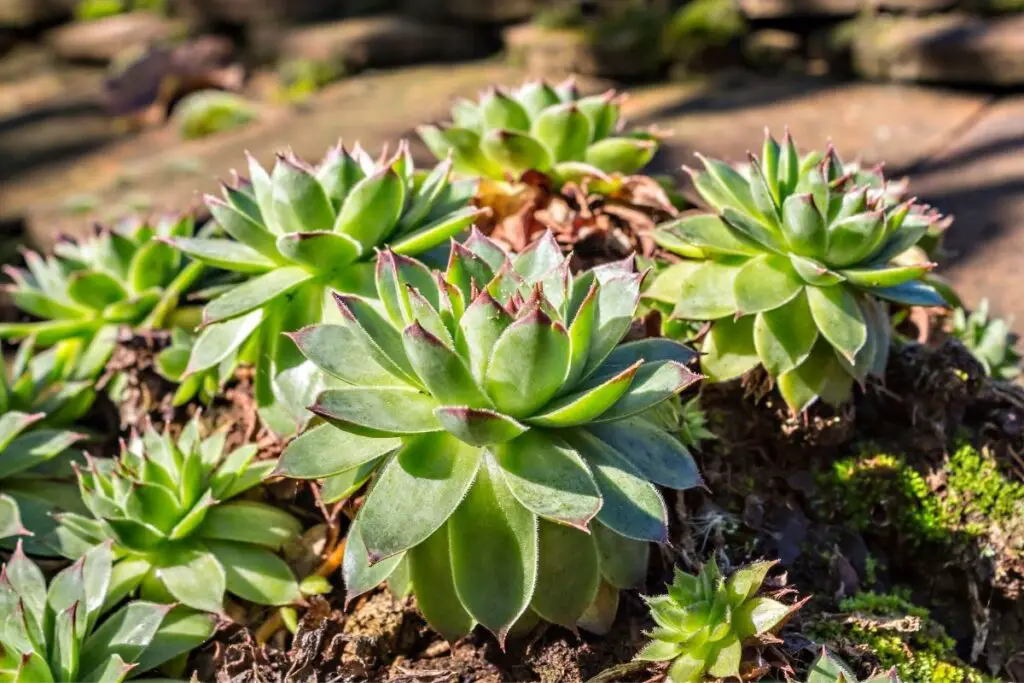
A sufficient amount of sunlight is essential for Hens and Chicks. They love a lot of sun for healthy growth and bright colors.
For the larger species of Hens and Chicks, select a spot getting full sun for 10-12 hours. The larger varieties, primarily those having broad, juicy, and 4-inch diameter leaves, need full sun.
You don’t need to worry about the plant getting exposed to the afternoon sun. They do not need any protection from the afternoon sun. A south or west direction will be good for them.
For the dwarf Arachnoideum and Globiferum Hens and Chicks, choose a spot getting partial sun for 4-6 hours. It can be either constant direct sun or in different stretches.
Additionally, these small varieties will need protection from the afternoon sun. Select an eastern direction in your garden. It gives perfect morning sunlight with the right intensity.
In this direction, there is a low chance of sunburn.
If you plan to plant them on the southern side, create a shade to protect them from the afternoon sun.
It is not only about the location that obtains sunlight for hours. Finding the right spot also depends on when the sun arrives in the garden bed.
Dewdrops will dampen the soil bed and foliage that, in turn, increase the risk of diseases. Ensure that the spot you are choosing receives direct morning sun so that this moistness dries out quickly.
Also read: Are Hens And Chicks A Succulent? (+Basic Care)
Choose a location with well-drained and dry soil.
As I mentioned already, a spot with well-drained soil is ideal for the Hens and Chicks. The soil should always remain dry and not drenched.
If your garden has a sunny spot and rocky soil together, stop analyzing the best location. Rocky soil is best for these plants because they don’t hold moisture for long. Don’t worry about its fertility and pH levels.
Hens and Chicks thrive on infertile and neutral soil. Rocky soil has a neutral pH level, so stay tension-free.
What to do if there is no rocky soil and only a sunny spot?
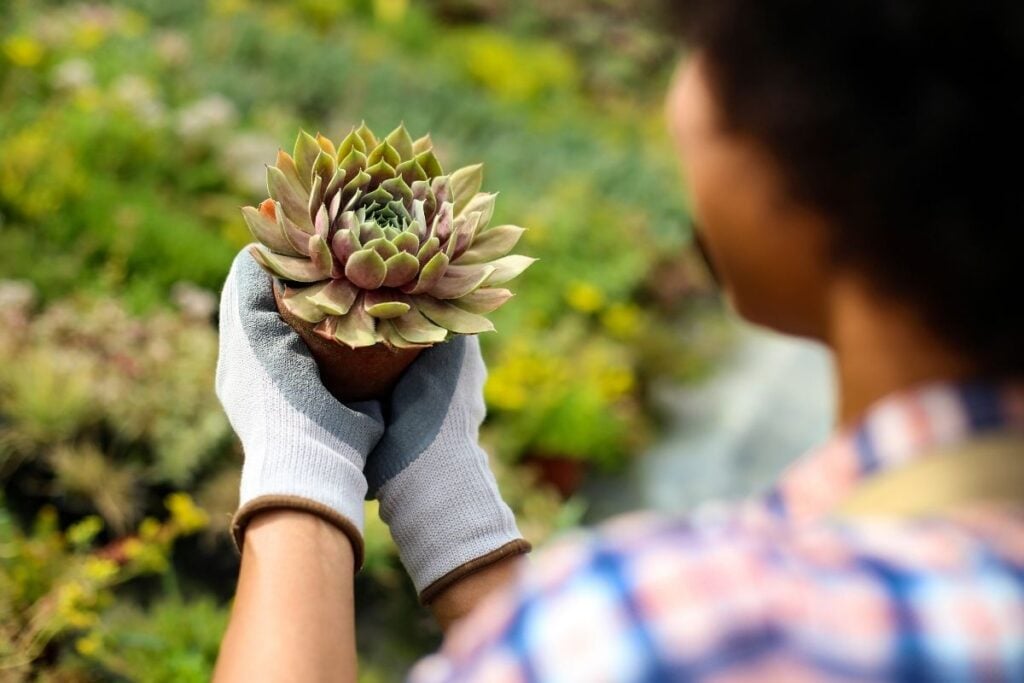
Don’t panic because we have solved that problem for you too. If your garden has a bright spot while the soil is too clayey or sandy, you can amend it.
If the ground area has pure clay or garden soil, add sand to the soil bed and vice-versa. Adding compost will also solve the crisis. Ensure that the planting site is away from roofs, tall trees, and fountains.
This point is related to the “Soil” point to some extent. Choose a spot where the soil bed doesn’t remain forever saturated. It happens when the spot is near a fountain (if any), roof, and tall trees.
The water from the roof, trees, and fountains will be responsible for prolonged moist soil. Hens and Chicks will not endure such wet conditions. It gives rise to fungal infections.
The tall trees dripping dews on the soil bed keep the soil wet all the time. However, the problem will resolve if your spot receives the direct morning sun. It will dry up the soil quickly.
But keep the plants away from under roofs and near fountains.
Select a place free from surrounding obstacles like tall trees and buildings.
If you have planted your Hens and Chicks in a location surrounded by tall trees and buildings, the sunlight will fail to reach the Sempervivum soil bed.
If the plant doesn’t get enough sunlight, it will become stretchy and elongated; the leaves will lose their charm and color. Choose a location away from tall trees or buildings si that they cannot block the sun from reaching the planting site.
Do not plant them near your house. When the sun changes its direction, the shadow of your home can fall upon the garden bed, thus giving the Hens and Chicks full shade.
The spot should give the plant protection.
Indeed the Hens and Chicks will need a spot having open space, well-drained soil, and lots of sunlight to thrive.
While choosing such locations, you must also ensure the protection of the plants from harsh weather conditions. Though these succulents are hardy perennials, they still need protection.
Instead of arranging any manual protections, you can try another substitute. You can plant them in a spot near trees and houses/buildings. You might wonder that I denied planting them near trees or buildings, but now I am saying the opposite. Both are true in specific conditions.
You can plant them near big trees or buildings so that they can block the strong winds and rains from attacking the soil bed directly. But do not plant too close that the trees and houses or buildings start blocking the sunlight.
Look out for a position having open space.
The location you choose should not only include a sunny spot or well-drained soil, but you must take into account the space you get from your selected area.
Hens and Chicks will produce many baby plants that we can plant and grow further. An open space will make sure you can plant the Hens and Chicks 4-6 inches apart.
The more space they receive, the more baby they will produce. If you are in love with these plants, you can always have lots of them in your garden all the time.
Open space not only helps produce more baby plants, but it will also help in good air circulation and avoid overcrowding.
When you plant the Hens and Chicks with space between each plant, they will receive good airflow, preventing infestation. Overcrowding will not support more production of baby plants. A good space will stop overcrowding and increase multiplying.
Also read: Do Hens And Chicks Multiply? (How Fast, How Much)
Final saying on the best place for Hens and Chicks
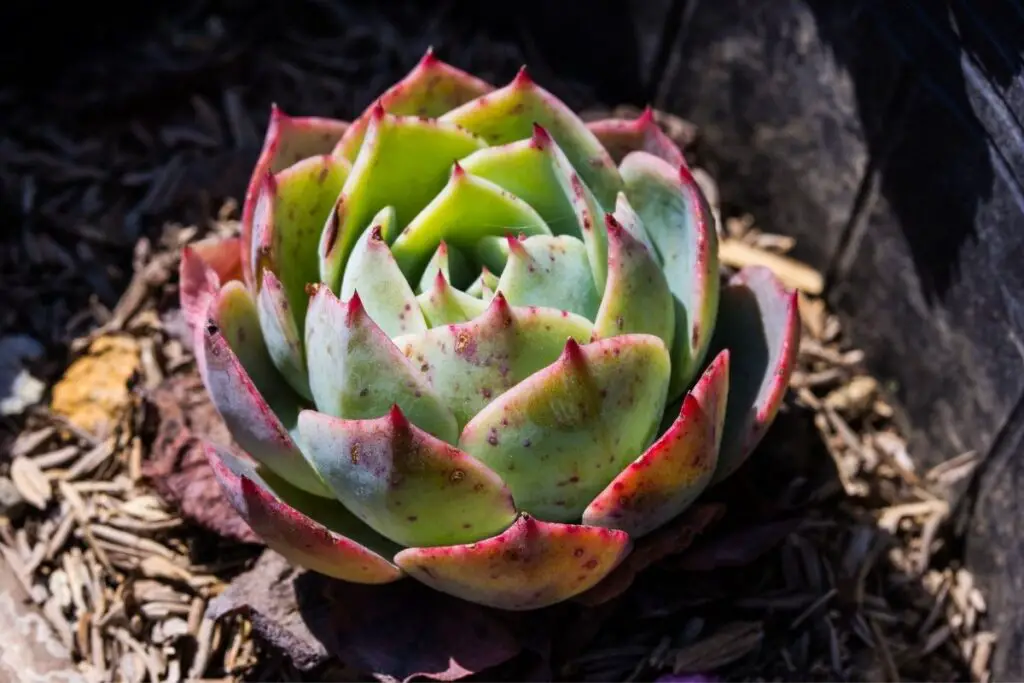
Choosing the right spot for Hens and Chicks is not at all complicated. In short, Hens and Chicks will grow best in a location:
- With ample sunlight
- Well-drained soil. It will be great if the location has a rocky soil bed.
- The Hens and Chicks have enough room for growing and multiplying with enough space around.
- The soil bed doesn’t always remain saturated from roofs and tall trees due to prolonged rain or dew. (Also, away from fountains if any)
- Free from obstacles like tall trees and buildings so that sunlight is not blocked. Do not plant too far away from trees and buildings. These can, later on, protect the plants from harsh rains or strong winds.
Take care of the plant without giving them any stress. Water them once a week and stop during rains and winters.
Fertilizing is not required, but little feeding once a year in spring encourages fast growth and more babies. You can always enjoy Hens and Chicks in your garden because of these baby plants.
Best spot for Hens and Chicks – FAQs
Can I plant Hens and Chicks in a gravel bed in my garden?
Yes. You can do it. Naturally, Hens and Chicks grow in rock slabs. If your garden has a spot with gravel beds, you can undoubtedly grow these plants there. You only need to take care of the watering.
When grown in gravels, they will require regular watering, especially during the dry summers.
Can I grow Hens and Chicks in a sunny spot over big stones or rocks?
The natural growing environment of Hens and Chicks are large rock slabs. This feature makes them more demanding. So if you have such kind of rock slab in a sunny spot, drill a hole in the rock.
Add little soil in the hole and plant the Hens and Chicks. Water them daily. That is all you need to do. You can also grow them by placing them in between stones. However, little soil is necessary for root growth.
Reference: Wikipedia, Iowa State University of Science and Technology, The University of Arkansas Division of Agriculture, NSDU, The Ohio State University, Missouri Botanical Garden.
